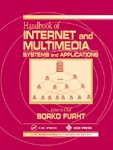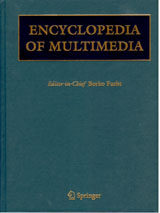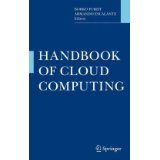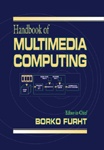Handbook of Data Intensive Computing
Springer
Editors: Dr. Borko Furht, Florida Atlantic University and
Armando Escalante, LexisNexis
 |
 |
Potential contributors:Send an email to bfurht@fau.edu |
 |
||
 |
 |
 |
Handbook of Data Intensive ComputingSpringer Editors: Dr. Borko Furht, Florida Atlantic University and Armando Escalante, LexisNexis |
||||||||||||||
|
||||||||||||||
Springer is launching a new Handbook of Data Intesive Computing with the main objective to provide a variety of research and survey articles (~18-36 pages) contributed by world experts in the field. Springer is committed to create a successful and unique Handbook in this field and therefore it intends to support it with a large marketing and advertising effort. Potential contributors should express their interest by sending an email to Borko Furht at bfurht@fau.edu.
DESCRIPTION
This Handbook will include contributions of the world experts in the field of data intensive computing and its applications from academia, research laboratories, and private industry. Data Intensive Computing refers to capturing, managing, analyzing, and understanding data at volumes and rates that push the frontiers of current technologies. The challenge of data intensive computing is to provide the hardware architectures and related software systems and techniques which are capable of transforming ultra-large data into valuable knowledge. Data intensive computing demands a fundamentally different set of principles than mainstream computing. Data-intensive applications typically are well suited for large-scale parallelism over the data and also require extremely high degree of fault-tolerance, reliability, and availability. In addition, most data intensive applications require real-time or near real-time response. The objective of the project is to introduce the basic concepts of data intensive computing, technologies and hardware and software techniques applied in data intensive computing, and current and future applications.
SCHEDULE
1. Contributors solicited and TOC defined December 15, 2010 - January 15, 2011 2. Articles/chapters delivered June 1 , 2011 3. First draft of Handbook completed June 15 , 2011 4. Handbook delivered to the Publisher July 1, 2011 5. Handbook published November 1, 2011
Links to important documents
Sample Chapter
(in MS Word)
TO AUTHORS:
1. MS Word and LaTex are acceptable formats.
2. Include in text only B/W FIGURES (high quality and clear).
3. Submit separate files for all figures and tables. You can also submit color figures (for the Web version of the Handbook).
3. Follow the format of the sample chapter
4. Follow the format of references in the sample chapter.
5. Include index terms at the end of the chapter.
LaTex format
TOPICS OF INTERESTS
Software architectures for Data Intensive Computing (DIC)
Hardware technologies for high-performance DIC
Programming langugages and abstractions for DIC
Extracting knowledge from large datasets
Fault tolerance in DIC
High speed, wide area DIC
Distributed DIC environments
Network performance for large-scale DIC
Security in DIC systems
Reducing data to facilitate human understanding and response
Experimental data analysis and visualization
Parallel data intesive algorithms
Future trends in data intesive computing
Cloud and grid computing for data intensive applications
Benchmarks for DIC
Applications of data intensive computing
- Scientific applications - Bioinformatics - Large science discoveries - Climate change - Environment - Energy - Commercial applications